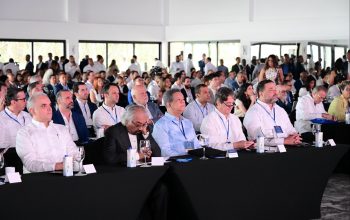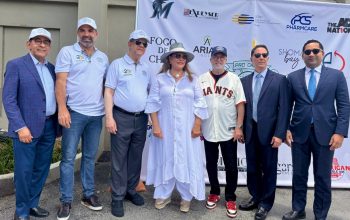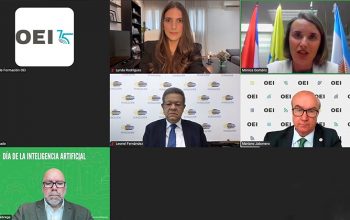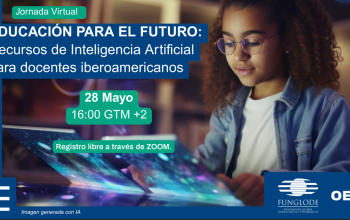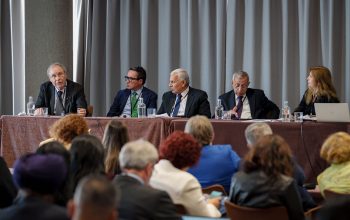news
The Metro of Santo Domingo, the Subject of a Panel at UN Headquarters in New York City
May 4, 2010
 The Santo Domingo Metro was the subject of a panel on sustainable transportation held on Monday, May 3 at UN Headquarters in New York. “A Multidimensional Approach to Sustainable Development and
The Santo Domingo Metro was the subject of a panel on sustainable transportation held on Monday, May 3 at UN Headquarters in New York. “A Multidimensional Approach to Sustainable Development and
Millennium Development Goals: The Santo Domingo Metro System as a model for Sustainable Mass Transport” was the title of the event organized, among other institutions, by the Fundación Global Democracia y Desarrollo (FUNGLODE) and the Global Foundation for Democracy and Development (GFDD). The panel will be co-sponsored by InteRDom, the UN Global Compact, the United Nations Environment Programme (UNEP), the Special Unit for South-South Cooperation, and the Columbia Consortium for Risk Management (CCRM) of Columbia University.
The event began after 1:15 PM in Conference Room 6 of the new UN building and lasted until 2:45 PM. It was attended by sustainable development specialists from the UN as well as from businesses and other
organizations interested in the issue. The conversation centered around an analysis of how the construction of the Metro System of Santo Domingo is a multidimensional solution toward the advancement of a country on the path to sustainable development and the achievement of the Millennium Development Goals.
All of this was motivated by a study done by Carl Allen, Harvard Kennedy School Student and InteRDom Fellow. Mr. Allen holds a M.A. in Political Science and Urban
Planning. He presented the results of his research, carried out during the summer of 2009, which focuses on the impact generated by the metro on the lives of students.
Allen’s research is supported by documentation provided by organizations, press reports, personal interviews and surveys of Santo Domingo’s ridership. According to his research, of the more than 65,000 daily metro passengers/trips, the numbers could increase between 2% and 5% per year.
This percentage could be higher if other train lines and routes begin to function. “The metro has the potential to transport between 25,000 and 36,000 passengers per hour each day.”
Among the most important points, Mr. Allen said the people he interviewed told him that they had saved more than 48 minutes in their daily trips by using the metro and that they spent 4% of their earnings to buy metro tickets; 20% of those interviewed
confirmed that their main destination on the metro was school or a learning center. In the case of the students, the majority said that now they have more time to study, rest, spend time with family and friends and participate in extracurricular activities.
Carl Allen went on to explain that he estimates annual time-savings acquired by metro passengers to represent $16.5 million dollars. Looking towards the future, he identified the implementation of a feeder bus system
as one of the main challenges to the development of underground transportation. “[The metro] can provide wider access to people who live in the poorest neighborhoods by connecting them to higher quality job sources; students can also be big beneficiaries. In addition, these routes can provoke an increase in the number of passengers, although it will depend on the system’s fares and the service offered. Added rail lines can also alleviate traffic congestion on the roads
leading to a reduction of toxic fuel emissions if the authorities impose more rules on operators and drivers. Even bus drivers would improve their quality of life if they had regular hours, better conditions, if more attention was paid to the difficulties faced by bus drivers today.”
Carl Allen concluded that the metro currently provides major accessibility and time-savings for passengers, especially students, adding to the reduction of traffic
congestion. Finally, he affirmed that feeder bus routes can increase these and other benefits if planning and implementation are carried out in an adequate manner.
The Harvard Kennedy School student was the first researcher to participate in the InteRDom Fellows Program. The Program, a division of GFDD and FUNGLODE’s internship and academic study program InteRDom, was developed in 2009 to respond to the Foundations’ desire to create a community of
scholars that contributes to GFDD and FUNGLODE’s growing body of research on matters of international concern that directly impact the Dominican Republic. The initiative complements GFDD and FUNGLODE’s overall mission to promote academic exchange, generate scholarship, and influence the creation of public policy related to economic and social development both at the national and international level. Through the Fellows Program, GFDD and FUNGLODE seek to develop
scholarship on issues at the forefront of the United Nations agenda in order to give voice to national and regional concerns and offer viable solutions to domestic and international challenges.
OTHER PANELISTS
In addition to the Harvard Kennedy School researcher, other keynote speakers included Omar Ramírez, Executive Vice-President of the Presidential Commission on Climate Change and the Clean Development
Mechanism for the Dominican Republic and Director of the FUNGLODE Center for Environmental and Sustainable Development Studies. He was joined by Onéximo González, Project Manager of Transvial S.A., General Manager of Bunkermym S.A., and Honorary Advisor to the Transport Reform Office (OPRET). Leonel Carrasco, Sub-Director of the Transport Reform Office (OPRET) of the Dominican Republic, was unable to participate as a panelist due to a last minute inconvenience that
prevented him from attending the event.
Onéximo González presented a proposal for sustainable transportation called “Urban Surgery in Santo Domingo,” based on research on the current public transport system of Santo Domingo that evaluates marginalization, accessibility, traffic congestion and environmental impact. He underscored the importance of creating a legal framework to sustain, over time, the modernization of the
country’s transport system.
Mr. González provided a historical perspective, outlining migration from the countryside to the city 50 years ago and population density patterns throughout the city. He presented important data on the public transport system in the Dominican capital. “The transport system has 204 routes over an area of 1,972 kilometers which is equal to five times the longitude of the
city’s main road network,” said González. “And it provokes 578 tons of contaminating particles per year, 4,752 of carbon monoxide and 758 of nitrogen monoxide.”
This system, according to data gathered by González, is made up of 19,800 vehicles that make approximately 2.82 million trips per day. “Of these, 72% are comprised of 16,500 public vehicles, which on average, were
manufactured over 20 years ago and emit high levels of emissions. Only 4% of the city’s transport demand is met by buses.” This system of low capacity vehicles costs the government $290 million dollars per year, including $16 million in subsidized Liquid Petroleum Gas for the public vehicles. “Users have to pay up to 25% of their monthly salary in transportation costs, hence, the importance of the metro.”
Onéximo
González presented future metro development plans, which include the implementation of 40 feeder routes, five times more than what exists today. “We would employ 1,600 units, each with a 40 passenger capacity, for these routes, 50 times more passenger capacity. Operational costs would be reduced by $30 million dollars and environmental impact would be reduced by 70%.”
González also placed a great deal of
importance on the Ozama River Avenue. “It is one of the most important metro projects in terms of sustainability and fulfilling the Millennium Development Goals. It will impact 285,000 residents in neighborhoods in the area that are affected by the river’s pollution.” He described four tracks to unite three metro stations. “It is a way of eradicating marginalization by providing a drainage system and to prevent the contamination from
reaching the river.”
He went on to discuss the importance of two additional projects, the first: a road connecting the Haina industrial zone to the Las Americas International Airport, linking the north, south and east of the Dominican Republic with 65 kilometers of roadway; and the second: an expansion of the Malecon (seaside promenade) of Santo Domingo to include six lanes. “Modern transportation is the right of citizens and
a duty of the government,” González said in conclusion.
Omar Ramírez, began his lecture by talking about the impact transportation has on the environment on a global level. “It is the fifth largest emissions producer, representing 23% of all energy consumed on the planet causing 13% of the emissions.” He warned that this number will rise to 120% by 2050 “and that it is the only sector that will continue growing
exponentially unless there is a global policy to stop it.”
According to Mr. Ramírez, mobility and growth go hand-in-hand. “By 2050 there will be 3 billion cars on the streets, and, according to the Texas Transport Institute, today 90 billion is lost in fuel consumption within 4 million hours of transport,” declared the former Minister of Environment.
Going from global to local, Omar
Ramírez affirmed that economic growth in the last 15 years has brought about a transformation in auto sales. “The importing of used vehicles from the big markets, without catalytic converters, and with years of use … is having negative effects. The burning of fuel exceeds acceptable levels set by the World Bank. We are not ensuring that state engines are fitted with mechanisms to prevent the emission of contaminating particles — this is due to a lack of
control and supervision.”
“More than 83% of the cars on the road are over 10 years old, resulting in higher emissions of toxic gases,” said the former Minister of Environment. “Today there are 6 million vehicles and, of these, 2 million have been on the road for the past 5 years. What is worrying is that cars are reproducing faster than the human population.”
Ramírez described the metro as an important environmental solution. It has the potential to reduce CO2 emissions by 100,000 tons per year – a sizeable amount in terms of carbon credit. “If [the Dominican Republic receives] an average of 10 Euros for each ton, that would translate into a million Euros a year, 54 million pesos that could be invested in the metro and in the economy. Reducing the impact of transportation is very cost effective,
particularly when it comes to mitigating climate change,” asserted Ramírez.
The welcoming speech was given by Yamile Eusebio, Director of the GFDD Office in New York. Kerry Stefancyk, GFDD/FUNGLODE Representative to ECOSOC, introduced the panel. Closing remarks were given by Francis Lorenzo, Ambassador to the Permanent Mission of the Dominican Republic to the United Nations. The panel was moderated by John R. Gagain Jr., Director of
Global Studies at FUNGLODE and Senior Advisor for the UN Global Compact in New York.
GFDD, FUNGLODE and the United Nations
The organization of this panel was part of GFDD and FUNGLODE’s commitment to contribute to the United Nations’ work agenda. This year, in addition to submitting six high-level reports on Public Health prepared by GFDD and FUNGLODE’s Center for Public Health Studies to the
Commission on Population and Development, GFDD and FUNGLODE have also developed a report on the contributions of the Santo Domingo Metro System to sustainable development and the achievement of the Millennium Development Goals.
GFDD and FUNGLODE’s report on the Santo Domingo Metro System, prepared by InteRDom Fellow, Carl Allen, responds to CSD’s 2010/2011 Programme of Work, which is devoted to the thematic areas of Transport, Chemicals, Waste
Management, Mining, and Sustainable Production and Consumption. As an InteRDom Fellow, Mr. Allen interviewed key people in the area of transportation and conducted survey studies of Santo Domingo’s ridership. The outcome of his research is an extensive report on the effects of the metro on the nation’s urban development, which includes recommendations for maximizing societal and environmental benefits.
GFDD and FUNGLODE support the United Nations and
its different agencies in carrying out their missions and achieving their goals. In 2004, GFDD and FUNGLODE were admitted to the United Nations System as institutions with consultative status, joining the Economic and Social Council (ECOSOC), the United Nations Conference on Trade and Development (UNCTAD), the Department of Public Information (DPI), the Global Compact Office (UNGC), and the World Summit on the Information Society (WSIS).
- Report prepared by Carl Allen for the Commission on Sustainable Development
- Presentation by Carl Allen
- Presentation by Oneximo González
- Presentation by Omar
Ramírez - Presentation by Leonel Carrasco
- Learn more about the InteRDom Fellows Program
- See video on InteRDom Fellow Carl Allen
Related link:

